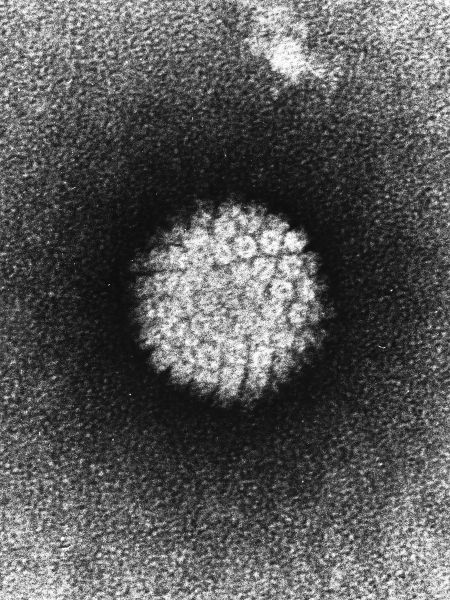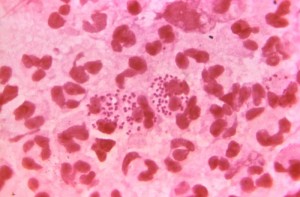Sexually transmitted infections (STI), once called sexually transmitted diseases (STD) and venereal diseases (VD) have seen there highs and lows in the United States during the past couple decades.
Some are very common, affecting millions annually which many people are aware of, while others are not so common and the general public may have never heard of.
In Part 1 of this series, I will briefly go over the more common STI in the US.
Human papillomavirus (HPV)

By far the most prevalent STI reported, new or new and existing combined, HPV accounts for approximately 79 million of the total STIs in the United States.
The CDC says most sexually active men and women will get HPV at some point in their lives, which translates to everyone’s at risk.
Of the more than 100 types of HPV, most being harmless, some 40+ distinct types can infect the genital tract. Of the 13 HPV types designated as human carcinogens, types 16 and 18 account for 70% of cervical cancers worldwide. Among non-carcinogenic types, types, HPV 6 and 11 are responsible for 90% of genital warts.
Although the body’s immune system clears most HPV naturally within two years (about 90 percent), some infections can persist causing diseases like genital warts and more seriously, cervical and other cancers.
There has been a protective vaccine available in the US since 2006; however, the federal health agency says the HPV vaccine uptake in the US is relatively low. In 2013, a national survey found that 57% of girls aged 13–17 years had received at least 1 dose of the HPV vaccine series, but only 38% had received all 3 doses in the series. Vaccine uptake is much lower among boys.
Herpes Simplex Virus
Genital herpes encompasses herpes simplex viruses type 1 (HSV-1) or type 2 (HSV-2) and the CDC says that more than 24 million people have new and existing HSV-2 infections. There are about three-quarters of a million new HSV-2 infections annually.
Nationwide, 16%, or about one out of six, people aged 14 to 49 years have genital HSV-2 infection.
Although HSV-2 seroprevalence is decreasing, most persons with HSV-2 have not received a diagnosis.
There is no treatment that can cure herpes. Antiviral medications can, however, prevent or shorten outbreaks during the period of time the person takes the medication. In addition, daily suppressive therapy (i.e., daily use of antiviral medication) for herpes can reduce the likelihood of transmission to partners.
Chlamydia
The most common bacterial STI, Chlamydia is the most commonly reported notifiable disease in the United States. 1,401,906 cases were reported in the US in 2013.
Any sexually active person can be infected with chlamydia. It is a very common STD, especially among young people. It is estimated that 1 in 15 sexually active females aged 14-19 years has chlamydia.
Known as the “silent” infection because it is so often asymptomatic, untreated Chlamydia an carry some serious complications to include pelvic inflammatory disease (PID), which is a major cause of infertility, ectopic pregnancy, and chronic pelvic pain.
Asymptomatic infection in men is as high as 25%, in women 70%! If symptoms do appear, it’s usually within 1-3 weeks.
When symptoms are present in men it’s sometimes difficult to distinguish from gonorrhea; urethral discharge, itching and burning during urination. In women, symptoms are also similar to gonorrhea with discharge and bleeding being most common.
Men or women who have receptive anal intercourse may acquire chlamydial infection in the rectum, which can cause rectal pain, discharge, or bleeding. Chlamydia can also be found in the throats of women and men having oral sex with an infected partner.
In pregnant women, untreated chlamydia has been associated with pre-term delivery, and can spread to the newborn, causing an eye infection or pneumonia.
CDC recommends yearly chlamydia testing for all sexually active women age 25 or younger and older women with risk factors for chlamydial infections (e.g., women who have a new or more than one sex partner), and all pregnant women.
Human Immunodeficiency Virus (HIV)
There are approximate 908,000 new and existing HIV infections in the United States with an estimated 40,000 new cases reported annually.
While great progress has been made in preventing and treating HIV, HIV and AIDS remain a persistent problem for the United States and countries around the world.
Although there is currently no safe and effective cure at present, with proper medical care, HIV can be controlled. Treatment for HIV is often called antiretroviral therapy or ART. It can dramatically prolong the lives of many people infected with HIV and lower their chance of infecting others.
About 18,000 people die from AIDS annually in the US.
Gonorrhea

In 2013, a total of 333,004 cases of gonorrhea were reported in the United States, yielding a rate of 106.1 cases per 100,000 population.
Gonorrhea is a sexually transmitted infection (STI) caused the bacterium, Neisseria gonorrhoeae. This bacterium can infect the genital tract, mouth and rectum of both men and women. Ejaculation does not have to occur for the disease to be transmitted. It can also be transmitted from mother to baby during delivery.
Symptoms of gonorrhea usually appear with 2 to 5 days after sexual contact with an infected partner, occasionally symptoms make take longer to appear.
In women, infection may be asymptomatic. If present, the early symptoms of gonorrhea are often mild. The first symptoms in women are frequently; painful or burning sensations when urinating, an increase in discharge (yellow or bloody) and bleeding after intercourse.
Men have symptoms more often than women and they may include; a white, yellow or green discharge from the penis with pain, burning sensations during urination, and painful, swollen testicles.
While infection of the throat and rectum are frequently asymptomatic, rectal infection may have discharge, itching and painful bowel movements. The complications of untreated gonorrhea are numerous. The most common being pelvic inflammatory disease (PID), a serious infection of the female reproductive tract.
Ectopic pregnancy may occur due to scar tissue that’s formed in the fallopian tubes. This can result in miscarriage or death of the mother.
In men, untreated gonorrhea can cause epididymitis, a painful condition of the testicles that can lead to infertility. Rarely, untreated gonorrhea can spread through the blood to the joints, causing permanent joint damage (gonococcal arthritis). Problems for the newborn that gets gonorrhea during delivery are blindness, joint and blood infections. When a child has the infection in any part of the body, it’s most commonly due to sexual abuse.
N. gonorrhoeae has progressively developed resistance to each of the antimicrobials used for treatment of gonorrhea. Most recently, declining susceptibility to cefixime resulted in a change to the CDC treatment guidelines, so that dual therapy with ceftriaxone and either azithromycin or doxycycline is now the only CDC-recommended treatment regimen for gonorrhea. The emerging threat of cephalosporin resistance highlights the need for continued surveillance of N. gonorrhoeae antimicrobial susceptibility.
Syphilis
The rate of primary and secondary (P&S) syphilis reported in the United States decreased during the 1990s; in 2000, the rate was the lowest since reporting began in 1941.
However in 2013, 17,375 cases of P&S were reported in the US with a bulk of that attributed to men, particularly gay and bisexual men.
Syphilis is a sexually transmitted infection (STI) caused by the bacterium, Treponema pallidum. The most common way to get syphilis is by having sexual contact (oral, genital or anal) with an infected person. The secondary lesions are also infective and contactwith them could transmit the bacteria. It can also be transmitted from an infected motherto her baby (congenital transmission).
Syphilis goes through four stages that can overlap:

Primary Syphilis
The first symptom of primary syphilis is frequently a small, round, firm ulcer called a chancre (pronounced “shanker”) at the place the bacteria enters the body (usually the penis, vulva or vagina, but it may appear on the cervix, tongue or lips). There is usually just one chancre, however there can be many. Swollen lymph nodes in these areas are common.
The chancre usually appears in about 3 weeks after infection, but can occur anytime from 9-90 days after infection.
Because chancres are painless and can occur inside the body, you may not notice it. It disappears after 3-6 weeks whether you are treated or not. If primary syphilis goes untreated, it then moves into the secondary stage.
Secondary Syphilis
The most common symptom of this stage is a non-itchy rash. The rash is usually on the palms of the hands (see below) and soles of the feet, it can cover the whole body or only a select few areas. This occurs 2-10 weeks after the chancre heals. Other common symptoms are sore throat, fatigue, headache, swollen glands and less frequently hair loss and lesions in the mouth.
Much like primary syphilis, secondary syphilis will disappear even without treatment. If untreated it goes into the latent and tertiary stages.
Latent Syphilis
This is the hidden stage of syphilis. At this stage there are no symptoms. This stage can last for weeks or decades.
Early latent syphilis is still an infectious stage and you can transmit the disease to your partner. In late latent syphilis, the risk of infecting a partner is low or absent.
Signs and symptoms may never return or if untreated it goes into the most serious stage, tertiary syphilis.
Tertiary Syphilis
Even without treatment only a minority of infected people develop these horrible complications. In this stage, the bacteria will damage the heart, eyes, brain, bones, joints and central nervous system. This can happen decades after the initial infection. This can result in blindness, deafness, memory loss, heart disease and death. Neurosyphilis is one of the most severe signs of this stage.
Congenital syphilis can results in miscarriages, premature births and stillbirths. Some infants with congenital syphilis have symptoms at birth, but most develop symptoms later. Sore on infected babies are infectious so holding and kissing infected babies could transmit the disease.
It is very easy to detect early stages of syphilis through blood tests that detect antibodies.
It is easy to treat syphilis in the early stages with one injection of Penicillin. Later stages or neurosyphilis may take daily doses given by IV in a hospital. It is important to note in late syphilis, any damage done to organs cannot be reversed.
Sexually Transmitted Infections: Those common and those not so common, Part 2
Robert Herriman is a microbiologist and the Editor-in-Chief of Outbreak News Today and the Executive Editor of The Global Dispatch
Follow @bactiman63


20 thoughts on “Sexually Transmitted Infections: Those common and those not so common, Part 1”